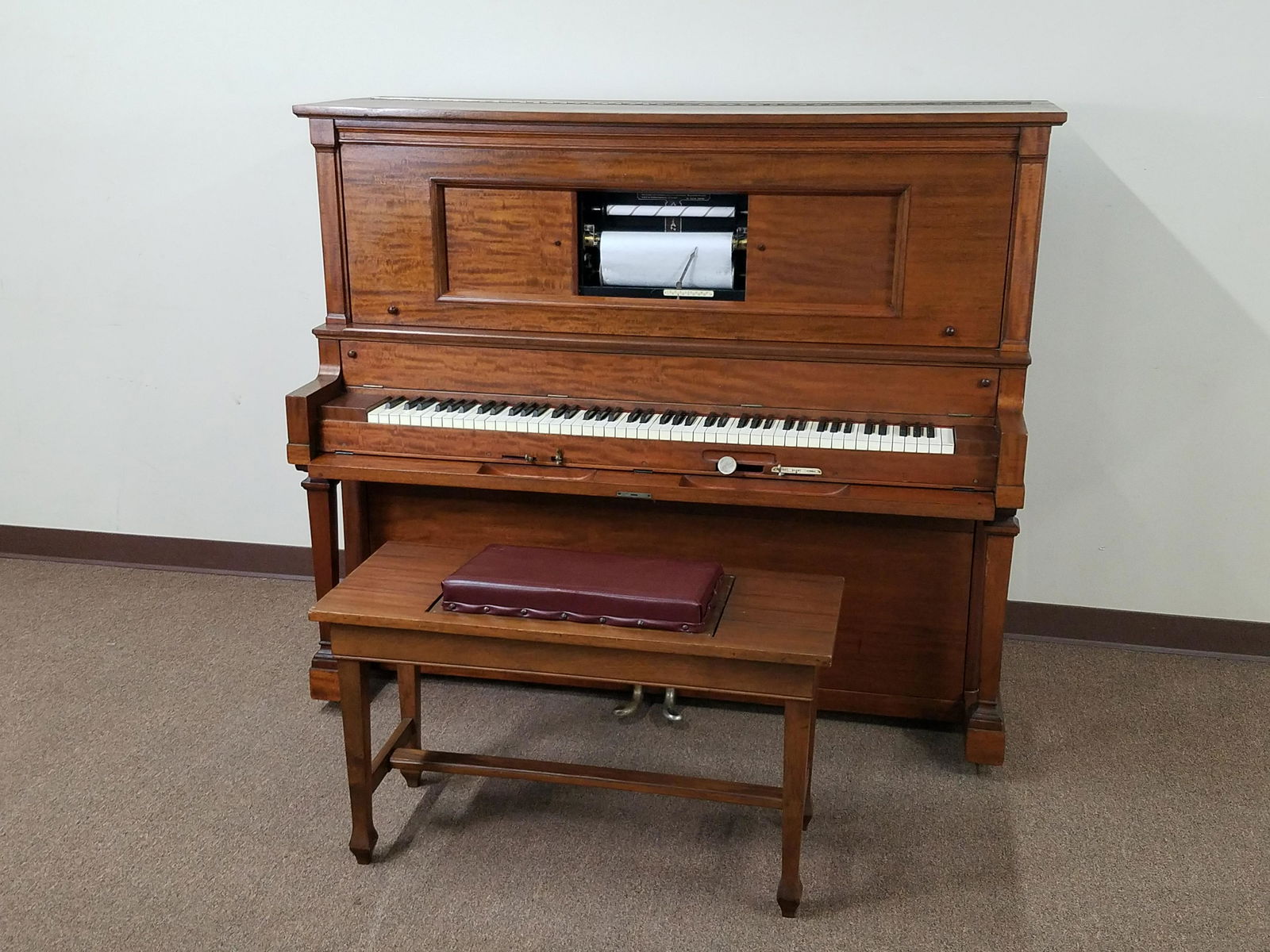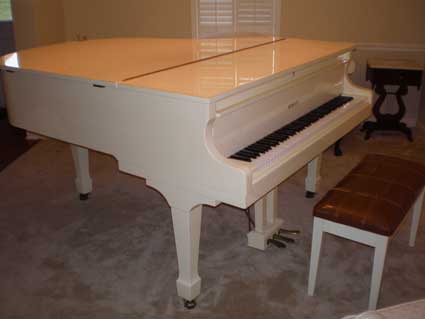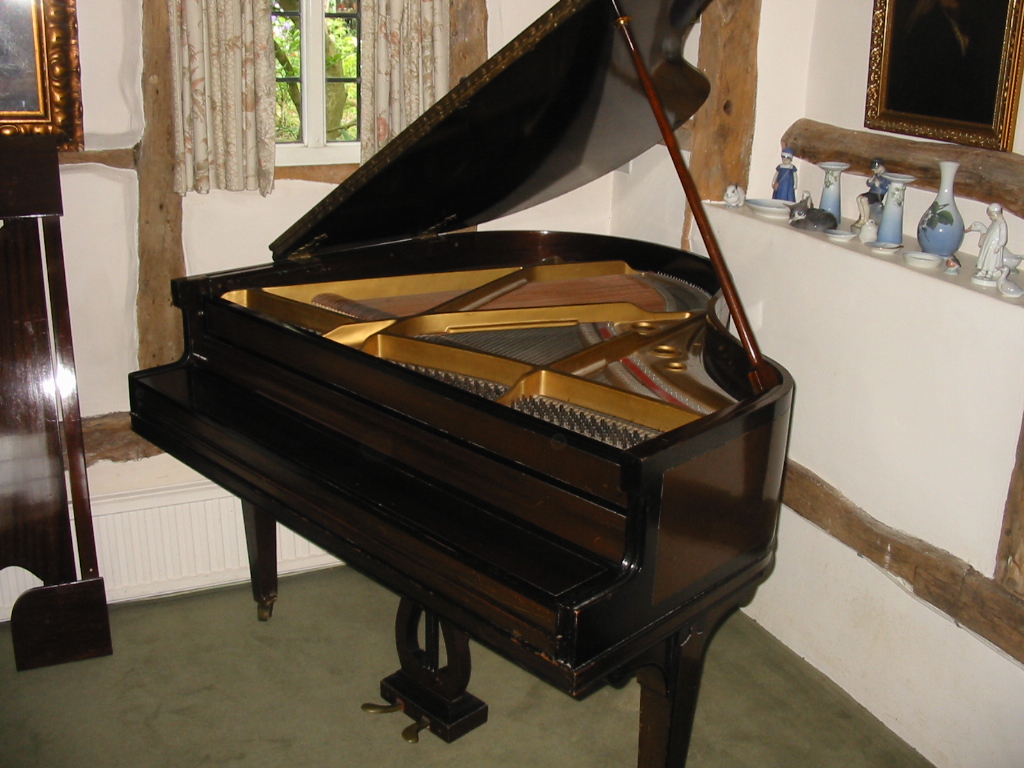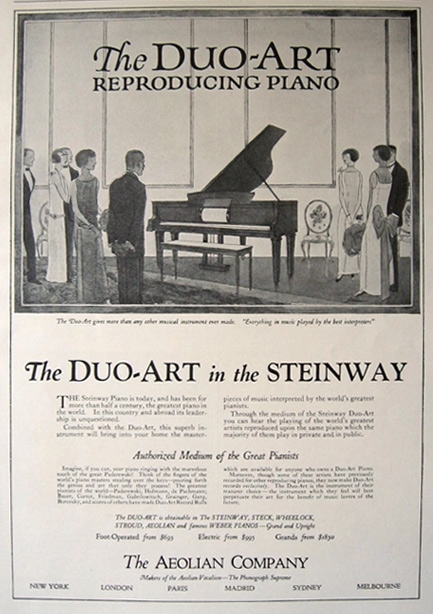

While the player piano matured in America, a young inventor in Germany, Edwin Welte, was working on a player which would reproduce all the aspects of the performance automatically, so that his machine would play back a recorded performance exactly as if the original pianist were sitting at the piano keyboard. The consensus was key to avoiding a costly format war, which plagued almost every other form of entertainment media that followed roll music. Understanding the need for compatibility was the defining moment of the player industry. Any player made anywhere in the world could now play any make of roll.

This kept the 11¼-inch roll, but now had smaller holes spaced at 9 to the inch. This was a major catastrophe for many small manufacturers, who had spent all their capital on setting up 65-note player operations, and the result was rapid consolidation in the industry.Ī new full-scale roll format, playing all 88 notes, was agreed at an industry conference in Buffalo, New York in 1908, the so-called Buffalo Convention. Both ideas were ridiculed by his competitors as unnecessary or impractical, but Clark rapidly won both battles.īy the end of the decade, the piano player device was obsolete, as was the 65-note format. The pioneer of this decade was Melville Clark, who introduced two key ideas: the full-scale roll which could play every note on the piano keyboard, and the internal player as standard. Ragtime music did feature, but not commonly: in this period, the player was being sold on its artistic capabilities to rich buyers. Many companies' catalogs ran to thousands of rolls, mainly of light, religious or classical music. Huge sums were spent: by 1903, the Aeolian Company had more than 9,000 roll titles in their catalog, adding 200 titles per month. A standard 65-note format evolved, with 11 + 1⁄ 4-inch-wide (290 mm) rolls and holes spaced 6 to the inch, although several player manufacturers used their own form of roll incompatible with other makes. The Pianola was advertised in one of the highest-profile campaigns ever, making unprecedented use of full-page color advertisements. Trackerboard (music roll passes over trackerboard). Connection from pneumatic to action of piano. Reservoir high tension (low-tension reservoir not shown.) 5. That mechanism finally came into widespread use in the 20th century and was all-pneumatic, with foot-operated bellows providing a source of vacuum needed to operate a pneumatic motor driving the take-up spool while each small inrush of air through a hole in the paper roll was amplified in two pneumatic stages (the so-called double valve mechanism) to sufficient strength to strike a loud note. Votey who invented in 1896 the first practical pneumatic piano player, called the Pianola. This was in all probability due to the lack of suitably flexible airtight material to translate the air flow into the mechanical movement needed to trigger the player device. Surprisingly, the missing component was the pneumatic reading of the roll. However, it was to be 20 years before all these aspects were combined.

Aeolian player piano models how to#
These player pianos are usually capable of manual manipulation of expression by lever or pallet valve buttons and will reward any owner willing to learn how to operate the machine, with acceptable individualised musical interpretation.As of 1876, in Philadelphia, three working devices were exhibited that between them contained almost all the components that the final player piano would require.

This exercise had very little effect, if any, to the music, but saved cost of literally hundreds of thousands of individual pneumatic units and resulted in even higher profits for those companies who adopted this idea, eg. Due to streamlining and cost cutting, 88 note players (while still maintaining an 88 note keyboard) were cut down to 84, 82 and 80 active notes, by removing the least played pneumatics in extreme bass and treble. These were 'budget' machines, built to a price, but still well made and if operated properly, capable of extremely musical performances. Most player piano makers produced standard 88 note players, usually with no automatic expression features, except the most basic automatic sustain.


 0 kommentar(er)
0 kommentar(er)
